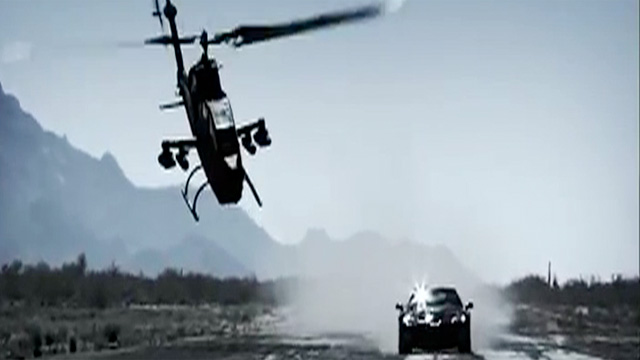Source:- Google.com.pk
An accident or a mishap is an unforeseen and unplanned event or circumstance, often with lack of intention or necessity. It usually implies a generally negative outcome which might have been avoided or prevented had circumstances leading up to the accident been recognized, and acted upon, prior to its occurrence. Injury prevention refers to activities designed to foresee and avoid accidents.
Accidents of particularly common types (crashing of automobiles, events causing fire, etc.) are investigated to identify how to avoid them in the future. This is sometimes called root cause analysis, but does not generally apply to accidents that cannot be deterministically predicted. A root cause of an uncommon and purely random accident may never be identified, and thus future similar accidents remain "accidental."
Types
Aviation accidents
An aviation accident is defined by the Convention on International Civil Aviation Annex 13 as an occurrence associated with the operation of an aircraft, which takes place between the time any person boards the aircraft with the intention of flight until such time as all such persons have disembarked, where a person is fatally or seriously injured, the aircraft sustains damage or structural failure or the aircraft is missing or is completely inaccessible.
The first fatal aviation accident occurred in a Wright Model A aircraft at Fort Myer, Virginia, USA, on September 17, 1908, resulting in injury to the pilot, Orville Wright and death of the passenger, Signal Corps Lieutenant Thomas Selfridge.
An aviation incident is defined as an occurrence, other than an accident, associated with the operation of an aircraft that affects or could affect the safety of operations.
An accident in which the damage to the aircraft is such that it must be written off, or in which the plane is destroyed is a hull loss accident.
Major disasters
Main article: List of accidents and disasters by death toll
Tenerife
The Tenerife disaster, which happened on March 27, 1977, remains the accident with the highest number of airliner passenger fatalities. 583 people died when a KLM Boeing 747 attempted to take off without clearance, and collided with a taxiing Pan Am 747 at Los Rodeos Airport on the Canary Island of Tenerife, Spain. There were no survivors from the KLM aircraft; 61 of the 396 passengers and crew on the Pan Am aircraft survived. Pilot error was the primary cause. Due to a communication misunderstanding, the KLM captain thought he had clearance for takeoff. Another cause was dense fog meaning the KLM flight crew was unable to see the Pan Am aircraft on the runway until immediately prior to the collision. The accident had a lasting influence on the industry, particularly in the area of communication. An increased emphasis was placed on using standardized phraseology in ATC communication by both controllers and pilots alike, thereby reducing the chance for misunderstandings. As part of these changes, the word "takeoff" was removed from general usage, and is only spoken by ATC when actually clearing an aircraft to take off.
JAL Flight 123
The crash of Japan Airlines Flight 123, on August 12, 1985 is the single-aircraft disaster with the highest number of fatalities: 520 died on board a Boeing 747. The aircraft suffered an explosive decompression from an incorrectly repaired aft pressure bulkhead, which failed in mid flight, destroying most of its vertical stabilizer, severing all of the hydraulic lines, making the 747 virtually uncontrollable. Pilots were able to keep the plane flying for 20 minutes after departure before crashing into a mountain. Remarkably, several people survived, but by the time the Japanese rescue teams arrived at the crash site, all but four had succumbed to their injuries.
Other crashes with high death tolls[edit]
On March 8, 2014, Malaysia Airlines Flight 370, flying from Kuala Lumpur disappeared with 239 people on board.
On June 1, 2009 Air France Flight 447 was a scheduled international flight from Galeão International Airport in Rio de Janeiro, Brazil, to Charles de Gaulle International Airport in Paris, France when the Airbus A330-203 airliner serving the flight stalled and crashed into the Atlantic Ocean, resulting in the deaths of all 216 passengers and 12 aircrew. The accident was the deadliest in the history of Air France. It was also the Airbus A330's second and deadliest fatal accident, and its first while in commercial passenger service.
On November 12, 2001, American Airlines Flight 587, an Airbus A300, crashed in the Belle Harbor neighborhood of Queens, New York, just after departing John F. Kennedy International Airport bound for Las Américas International Airport, Santo Domingo. The first officer's overuse of the rudder in response to wake turbulence from a Japan Airlines 747 was cited as cause. The crash killed all 260 people on board, as well as five people on the ground. It is the second-deadliest aviation accident on U.S. soil, after American Airlines Flight 191.
On July 25, 2000, Air France Flight 4590—a Concorde—crashed, resulting in the death of 109 people on board as well as four on the ground. Although Concorde jets had a very good safety record with no previous crashes, this event was the beginning of the end for the aircraft; the high-prestige supersonic plane was retired from service by both British Airways and Air France in 2003. The official finding traced the cause of the fuel tank rupture to the plane's impact with an aircraft part on the runway that had fallen off a previously departed airliner. According to the documentary "Counterfeit culture", the crash in part was due to the use of a counterfeit component on that aircraft.
On October 31, 1999, around 01:50 EST, in international waters, EgyptAir Flight 990 (MSR990) crashed into the Atlantic Ocean, about 60 miles (97 km) south of Nantucket Island, Massachusetts, killing all 217 people on board. The National Transportation Safety Board report concluded the First Officer intentionally dove the aircraft into the ocean; Egyptian authorities have vigorously denied this conclusion saying a mechanical failure was to blame.
On July 17, 2007, in the Congonhas-São Paulo Airport, TAM Airlines Flight 3054, an Airbus A320 did not slow down as it landed, it couldn't stop in time and overran the runway, it crashed at the TAM Warehouse, killing 199 people.
On September 2, 1998, Swissair Flight 111 crashed into St. Margaret's Bay, nearby Halifax, Nova Scotia, killing all 229 people on board. Fire had broken out in the cockpit; the plane disintegrated upon impact with the water.
November 12, 1996, The world's deadliest[14] mid-air collision was the 1996 Charkhi Dadri mid-air collision involving Saudia Flight 763 and Air Kazakhstan Flight 1907 over Haryana, India. The crash was mainly the result of the Kazakh pilot flying lower than the assigned clearance altitude. All 349 passengers and crew on board the two aircraft died. The Ramesh Chandra Lahoti Commission, empowered to study the causes, recommended the creation of "air corridors" to prevent aircraft from flying in opposite directions at the same altitude. The Civil Aviation Authorities in India made it mandatory for all aircraft flying in and out of India to be equipped with an Traffic Collision Avoidance System (TCAS), setting a world wide precedent for mandatory use of TCAS.
On July 17, 1996, TWA Flight 800 exploded and crashed into the Atlantic Ocean near East Moriches, New York 12 minutes after takeoff from John F. Kennedy International Airport, killing all 230 people on board.
On May 26, 1991, shortly after take-off from Bangkok, Lauda Air Flight 004, a Boeing 767-3Z9ER named "Wolfgang Amadeus Mozart," crashed in Thailand. The un-commanded deployment of one of the thrust reversers caused the loss of all 223 passengers, and crew, aboard the 767.
On December 21, 1988, Pan Am Flight 103, a Boeing 747–121 bound for New York-JFK from London-Heathrow with continued service to Detroit was destroyed by a terrorist bomb over the town of Lockerbie, Scotland. The crash killed all 243 passengers and 16 crew, and 11 people on the ground (all residents of Sherwood Crescent, Lockerbie), making it the worst terrorist attack involving an aircraft in the UK. This remains the deadliest terrorist attack on British soil. Following the crash, the Federal Aviation Administration imposed new security measures on American airlines flying out of 103 airports in Western Europe and the Middle East.
On July 3, 1988, Iran Air Flight 655 was an Iranian civilian airliner shot down by two surface-to-air missiles from the U.S. Navy's guided missile cruiser USS Vincennes over the Strait of Hormuz, killing all 290 passengers and crew aboard, ranking it seventh among the deadliest airline disasters.
On June 23, 1985, Air India Flight 182 Boeing 747-237B crashed off the southwest coast of Ireland when a bomb exploded in the cargo hold. All 307 passengers and 22 crew members died. One passenger had checked in as "M. Singh". Singh did not board the flight, however, his suitcase containing the bomb was loaded onto the plane. "Mr Singh" was never identified and captured. It was later determined Sikh extremists were behind the bombing as a retaliation for the Indian government's attack on the Golden Temple in the city of Amritsar, which is very important for the Sikhs. This was, at the time, the deadliest terrorist attack involving an airplane.
On December 12, 1985, a Douglas DC-8, Arrow Air Flight 1285, carrying American military personnel on a charter flight home for Christmas, crashed in Newfoundland, killing all 248 passengers and 8 crew members.[24] The Canadian Aviation Safety Board investigating the cause of the crash issued two different reports: The majority report cited ice on the wings as cause of the crash; the minority report suggests an explosion was the likely cause. This crash remains the worst air disaster in both US military and Canadian aviation history.
On September 1, 1983, a Soviet interceptor Sukhoi Su-15 shot down Korean Air Lines Flight 007, a Boeing 747-230B, after it flew into Soviet airspace, killing all 269 passengers and crew.[27]
On August 6, 1997, Another 747 also operated by Korean Air as Flight 801, crashed into Nimitz Hill, Guam, killing 228 people with 26 surviving. The accident was caused by a premature descent, below minimum safe altitude, because the captain failed to properly brief and conduct a nonprecision approach, in the required manner.
On August 19, 1980, Saudi Arabian Airlines Flight 163, a Lockheed L-1011 became the world's deadliest aviation accident that did not involve a crash. The crew performed a successful emergency landing after a fire broke out in the rear cargo hold. However the aircraft was not evacuated and all 301 passengers and crew died in the fire.
On May 25, 1979, American Airlines Flight 191, following improper maintenance and the loss of an engine, a McDonnell Douglas DC-10-10, lost control and crashed near O'Hare International Airport in Des Plaines, Illinois. The crash killed all 271 passengers and crew on board, as well as two people on the ground. It remains the deadliest commercial aircraft accident in the United States history, and was also the country's deadliest aviation disaster until the September 11 attacks in 2001.
On July 11, 1991, Nigeria Airways Flight 2120 had crashed in Jeddah, Saudi Arabia after an in-flight fire, all 261 people are killed, it is the deadliest aviation accident involving a DC-8.
On March 3, 1974, Turkish Airlines Flight 981, a McDonnell Douglas DC-10, crashed in a forest northeast of Paris, France. The London-bound plane crashed shortly after taking off from Orly airport; all 346 people on board died. It was later determined that the cargo door detached, which caused an explosive decompression; this caused the floor just above to collapse. The collapsed floor severed the control cables, which left the pilots without control of the elevators, the rudder and No. 2 engine. The plane entered a steep dive and crashed. It was the deadliest plane crash of all time until the Tenerife disaster in 1977.
Bicycle Accident
The first recorded bicycle crash occurred in 1842, reportedly between Kirkpatrick McMillan, an early rider of the velocipede, and a young girl in Glasgow. The report, however, is vague and the identification disputed.
A cyclepath with a protruding wall covering a private street. Rampant climbing plants obstruct the sight of cyclists even more.
The same cyclepath seen from the persprective of a resident who leaves the premises by car or bicycle. The rampant climning plants make it impossible to see approaching cyclists on time.
Causes of crashes vary according to local conditions. A study conducted in 2000 by the Institute for Road Safety Research in the Netherlands found that single bicycle accidents accounted for 47% of all bicycle crashes, collisions with obstacles and animals accounted for 12%, and collisions with other road users accounted for 40%, with the remaining 1% having unknown or unclassified cause.[citation needed] Many bicycle crashes are unreported and therefore not included in official statistics. Prospective studies estimate that less than 10% of bicycle crashes are officially reported.
In the United Kingdom cyclists have half of the accident rate (killed and serious injury per km) of motorcyclists but eight times the rate for motorists.
Even minor bicycle crashes not involving hospitalisation can incur significant costs for the cyclist and others. The Belgian SHAPES project has recently estimated the cost at 0.12 euros per kilometre cycled.
A cyclist who is hit by a car is more likely to be killed than one who just falls off.
One hazard of pedal cycling is the wheels getting caught in tramlines
Accident Video Clips Accident Photos Man Pictures of Honey Singh Graphic Image Clipart of Gopinath Munde Car Prone Photos
Accident Video Clips Accident Photos Man Pictures of Honey Singh Graphic Image Clipart of Gopinath Munde Car Prone Photos
Accident Video Clips Accident Photos Man Pictures of Honey Singh Graphic Image Clipart of Gopinath Munde Car Prone Photos
Accident Video Clips Accident Photos Man Pictures of Honey Singh Graphic Image Clipart of Gopinath Munde Car Prone Photos
Accident Video Clips Accident Photos Man Pictures of Honey Singh Graphic Image Clipart of Gopinath Munde Car Prone Photos
Accident Video Clips Accident Photos Man Pictures of Honey Singh Graphic Image Clipart of Gopinath Munde Car Prone Photos
Accident Video Clips Accident Photos Man Pictures of Honey Singh Graphic Image Clipart of Gopinath Munde Car Prone Photos
Accident Video Clips Accident Photos Man Pictures of Honey Singh Graphic Image Clipart of Gopinath Munde Car Prone Photos
Accident Video Clips Accident Photos Man Pictures of Honey Singh Graphic Image Clipart of Gopinath Munde Car Prone Photos
Accident Video Clips Accident Photos Man Pictures of Honey Singh Graphic Image Clipart of Gopinath Munde Car Prone Photos
Accident Video Clips Accident Photos Man Pictures of Honey Singh Graphic Image Clipart of Gopinath Munde Car Prone Photos
Accident Video Clips Accident Photos Man Pictures of Honey Singh Graphic Image Clipart of Gopinath Munde Car Prone Photos
Accident Video Clips Accident Photos Man Pictures of Honey Singh Graphic Image Clipart of Gopinath Munde Car Prone Photos
Accident Video Clips Accident Photos Man Pictures of Honey Singh Graphic Image Clipart of Gopinath Munde Car Prone Photos
Accident Video Clips Accident Photos Man Pictures of Honey Singh Graphic Image Clipart of Gopinath Munde Car Prone Photos
Accident Video Clips Accident Photos Man Pictures of Honey Singh Graphic Image Clipart of Gopinath Munde Car Prone Photos
Accident Video Clips Accident Photos Man Pictures of Honey Singh Graphic Image Clipart of Gopinath Munde Car Prone Photos












No comments:
Post a Comment